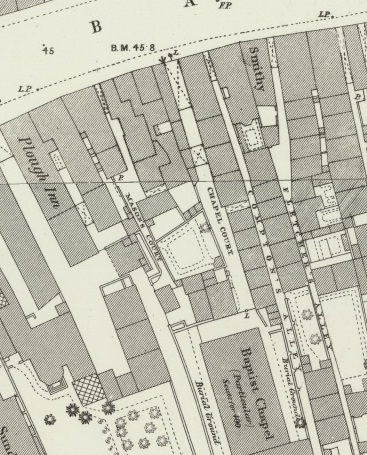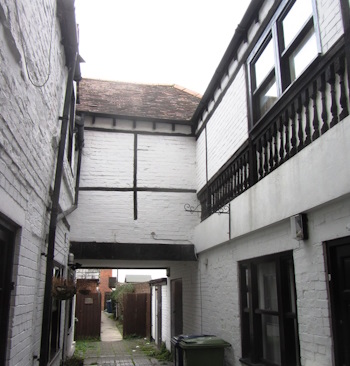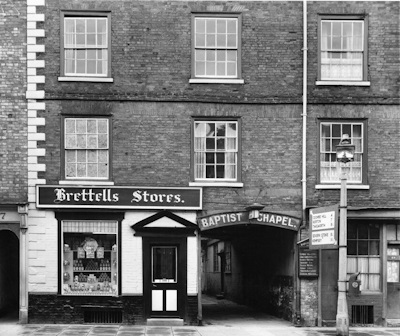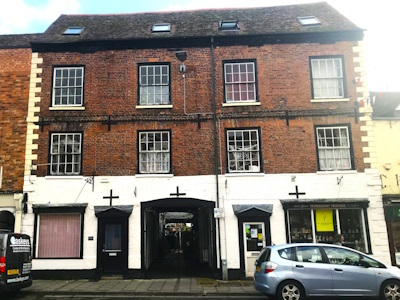81-82 Barton St, The Star and Garter
to Expand
In the sixteenth century, at the time of the dissolution of the monastery, Daniel Perte,’Bailiff to the Lord King’ described a large inn called the Crowne, or New Inn, which backed on to the Swilgate. There is no better information, but the old Star and Garter, now Chapel Court in Barton Street, must be a strong candidate.
Another probable reference to this elusive inn is in Thomas Crumpe’s will of 1664. The property he leaves is itemised; two principal bedrooms, with four-poster beds, five other bedrooms, two parlours, seven public rooms (One for playing ‘shuffleboard’) and a warehouse equipped with scales as well as various service rooms. The cellar contained thirteen hogsheads of beer.
The building has been much altered, but its scale and entrance indicates that it was once one of the town’s principal coaching inns. The remnants of first floor balustrades beyond the entrance arch suggests antiquity; a galleried inn of the style of the New Inn in Gloucester or the George in Southwark. The date on now removed rainwater heads, 1715, suggested a date for major rebuilding. Perhaps that was when the timber framing was hidden by brick?

Records of the inn are sparse, and it isn’t until 1769 that there is a definite reference. It is named in the Oxford Journal as the Maidenhead and is the starting, and finishing, point for a ‘flying stage wagon’, transporting parcels to London through Cheltenham and along the A40. They left Tewkesbury on Tuesday morning, and London on Friday. Six years later, a more modest enterprise is started, a ‘common stage wagon’ weekly to Oxford.
In 1780 the Maidenhead is advertised for sale as a ‘well-accustomed capital inn with a tenement and coal yard, well situated for the market and travelling business, with large stables’. It changed hands again in 1791, when Mr Giles took over from Mr Leighton. By then, the name had changed to the Star and Garter. He hired out post-chaises and horses and added concerts to the inn’s entertainment repertoire, with evenings of variety shows at the top-of-the- market price of 2s.

In 1796 there was a new landlord, named Bolton. He fell foul of an army officer who was billeted on him, who took advantage of the inn’s hospitality then took him to court for having the temerity to ask for payment for some of the ‘extras’ he’d demanded. Bolton was fined £2 and was very unhappy about it.
The next, and last, landlord was Lewis Prosser. He moved in in 1798. The inn was still the depot for a stage wagon, Birch’s, which left for London every Saturday, as well as a passenger-carrying post coach to Birmingham three times a week. An inside ticket cost 11s; outside 7s.
to Expand
The end came in 1803, when Mr Prosser sold up and moved to the Crown in Evesham. The Star and Garter was bought by the Baptists, who built a new, larger, chapel at the rear of the site, where the stables and cock-pit once were. It opened on June 21 1805. The buildings on the main street, converted to shops and flats, remain, though much altered over the years.
The Star and Garter was a hostelry for at least three hundred years, but closed more than two hundred years ago, at the height of the coaching boom in Tewkesbury. By then it was out of the premier league in Tewkesbury, and would have been overshadowed by its close neighbour, the Plough.




Comments